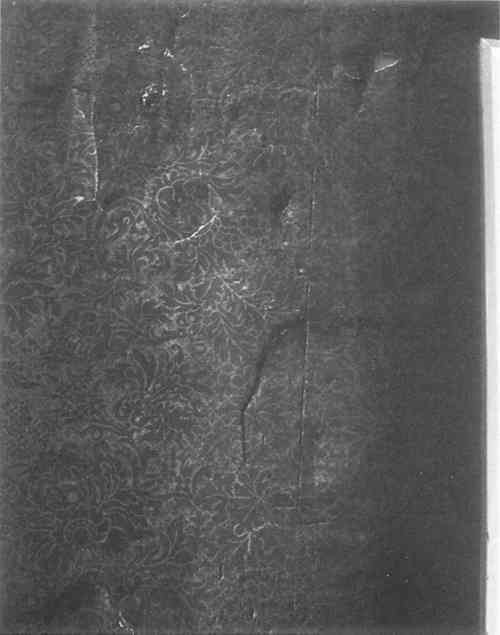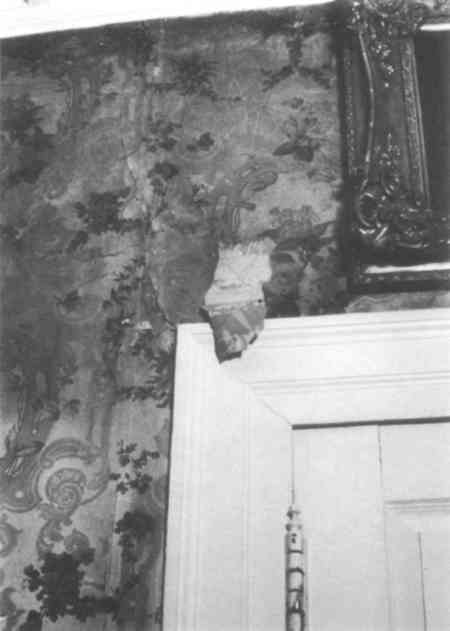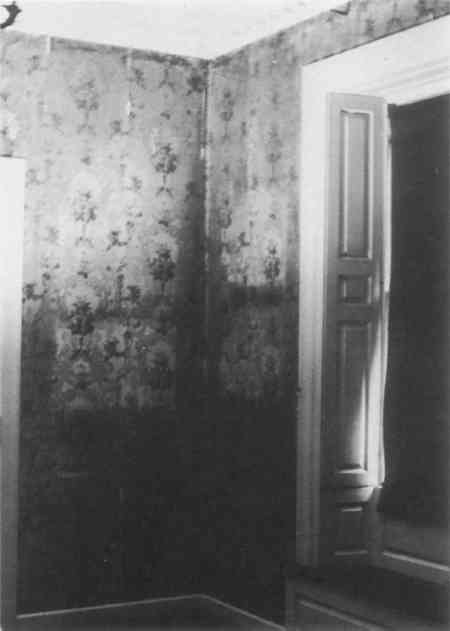WALLPAPER CONSERVATION AT THE LONGFELLOW NATIONAL HISTORIC SITE: PARLOR AND DINING ROOM
Elizabeth Kaiser Schulte
2 DEFECTS AND DETERIORATION PROBLEMS
NUMEROUS DEFECTS and deterioration problems plagued the wallpapers: structural defects involving the plaster and its foundation; support defects; design layer defects; and surface accretions, coating and overpaint.
Insecurities in the plaster support were most critical in the dining room, where the plaster had detached from the laths in several places. Holes in the plaster from nails and screws were numerous in both rooms. Each paper was extremely fragile and brittle. Losses and tears in the paper supports, often occurring along plaster cracks and cleavage sites, were numerous (Figs. 1 and 2). Extensive cleavage between the layers of wallpaper was a significant problem in the parlor (Fig. 2).1 Losses in the design area of the parlor paper resulted primarily from external forces such as abrasion from furniture movement.
Fig. 1.
Dining room paper before treatment. Raking light detail of tears, losses, blind cleavage, and holes in the plaster.
 |
Fig. 2.
Parlor paper before treatment. Detached flap exposing underlying paper. Tears in paper along plaster cracks evident in area left of flap. Waterstaining along top edge.
 |
Water damage caused by a leaky roof stained the paper, especially at the corners. Heavy dirt and soot accumulations from coal heating vents collected on the paper in all areas not covered by a work of art or a piece of furniture (Fig. 3). The pictures seem to have protected the paper to a certain extent. In the dining room, additional staining and darkening resulted from the uneven varnish coating. In areas where the furniture sat against the wall, staining from furniture polish also resulted (Fig. 4).
Fig. 3.
Parlor paper before treatment. Heavy dirt and soot accumulation. Design loss from furniture abrasion at lower left.
 |
Fig. 4.
Dining room before treatment. Uneven varnish coating and staining from furniture polish.
 |
|



